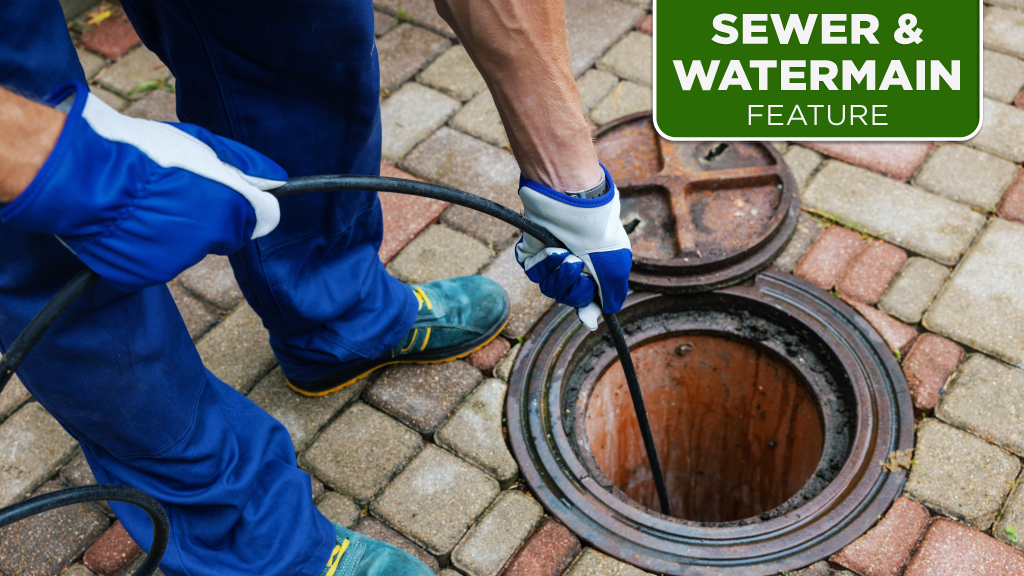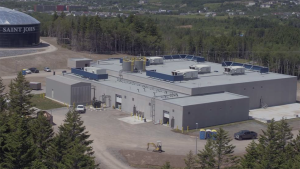The issue of non-flushables, such as wet wipes, plaguing wastewater authorities across Canada has added a new concern as Canada’s opioid crisis is resulting in more spent needles in sewer clogs.
“We are running into more needles because of the opioid crisis and there are needles galore in the sewage system,” said Barry Orr, who for more than a decade has been Canada’s leading voice in the fight against non-flushables, a member of an international committee concerned about non-flushables and establishing standards for what is deemed flushable in sewer lines. He is currently the sewer outreach and control inspector for the London, Ont.
Orr said often the only way to clean out these clogs at places such as pumping station is for maintenance crews to glove up and manually pull out the clogs. It is becoming more of a safety issue as needles are mired into the clog, said Orr.
Dana Zheng, source control program manager for Metro Vancouver’s Liquid Waste Services, said needles are also appearing in Metro Vancouver’s system. “I have heard from member municipalities that these items are turning up at the pump stations as well.”
Sanitary wipes, advertised as flushable, plus dental floss and other sanitary items can wrap around the propeller at pump stations and create a clog that traps spent needles.
In Calgary, Marissa Mitton, leader of the city’s wastewater operations and maintenance department said the city is also seeing needles turn up its’ sewage lift stations clogs “in certain sections of the city”. Mitton said that crews try not to manually clear these clogs but use vacuum or suction instead. “The safety of our employees is paramount,” she said.
Wastewater and sewer authorities struggle with non-flushables and cost estimates done indicated that Canadian authorities spend $250 million annually on dealing with clogs, according to Orr. No perfect solution has appeared and those in existence such as screens and grinders are expensive or not practical, he said.
Orr estimates that providing screens to all wastewater and sewage systems in Canada would cost approximately $1 billion. Core screens to capture materials can cost from $400,000 to $1 million. But, even screens are not fool proof – and come with a labor cost for clean-out associated with them.
“I think we have one of the better systems,” he said of London’s stepped screen system but it can still be over-whelmed by a heavy deluge of rain waters.
Metro Vancouver, the cities of London and Calgary have all by-passed grinders. As Orr points out, these grinders may reduce wipes to smaller pieces but they contain plastics or man-made fibres. These smaller pieces are then deposited into natural water bodies or land in bio-solids destined for compost material. “You are just pushing the problem more downstream,” he said.
Canada has escaped major incidents such as the Britain’s ‘wet wipe island’, where wipes and debris have formed an island in the Thames River equal to two tennis courts. But, municipal systems large and small have been impacted ranging from Saskatchewan’s Village of Air Ronge which last year offered a $50 rebate program for bidet installations to Halifax Water in August issuing a do not swim order in its harbor after its pumping station there was over-come by a clog of wipes.
Mitton said Calgary annually responds to more than 7,200 call outs of clogged sewer lines, with most relating to non-flushables, from homes and businesses and since COVID that figure has been rising. The problem in Calgary, she said, is that the city has some older pipes which may have rough surfaces or joins that snag wipes and prompt or contribute to fat, oils, and grease.
She has no figure on how much the city is spending clearing clogs from non-flushables but the city has 90 employees operating seven days a week. The city uses augers to help clear lines but also deploys 14 specialized combination trucks (nine for sewer clogs and five for storm drain clogs but back up sewer crews) which use a combination of vacuum and high power water, working with the augers, to remove clogs. “These trucks are expensive, costing half a million to three-quarters of a million,” she said.
Zheng said Metro Vancouver spends $2.5 million annually addressing clogs and replacing damaged equipment but the figure does not reflect the full cost as homeowners incur property damage as sewers back up. She is aware of one condominium where a sewer back-up cost the owner $130,000.
Orr is disappointed with the federal competition bureau’s ruling in October which tossed out the case brought by the lawyers of Friends of the Earth and Ecojustice claiming false advertising by the makers of 20 wipe products advertised as flushable. The Bureau found no clear definition of what flushable means.
Orr said the definition is the crux of the issue. Products need to be dispersible, he said, which means they have the same ability to disintegrate similar to toilet paper. In 2019, a report on from Ryerson University’s Flushability Lab tested 101 single-use products, of 23 were labeled as flushable. Not one single wipe was able to fall apart or disperse safely through the sewer system test emulating a household system.
“This research confirms conclusively what those of us in the industry already knew―that single-use wipes, including cleansing and diaper wipes, cannot be safely flushed, even those labeled as ‘flushable,’” said Orr at that time as he served as the report lead.










Recent Comments